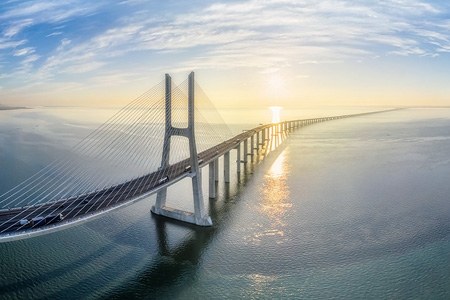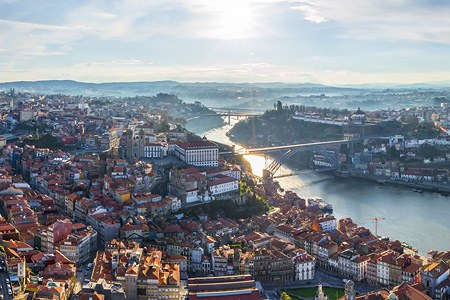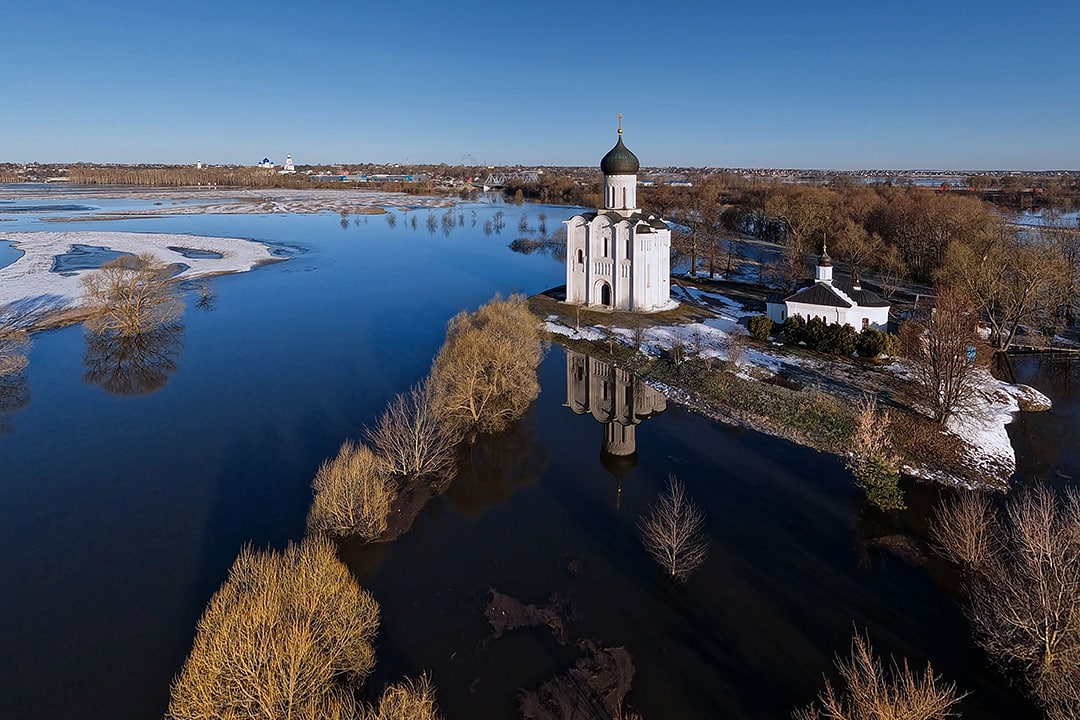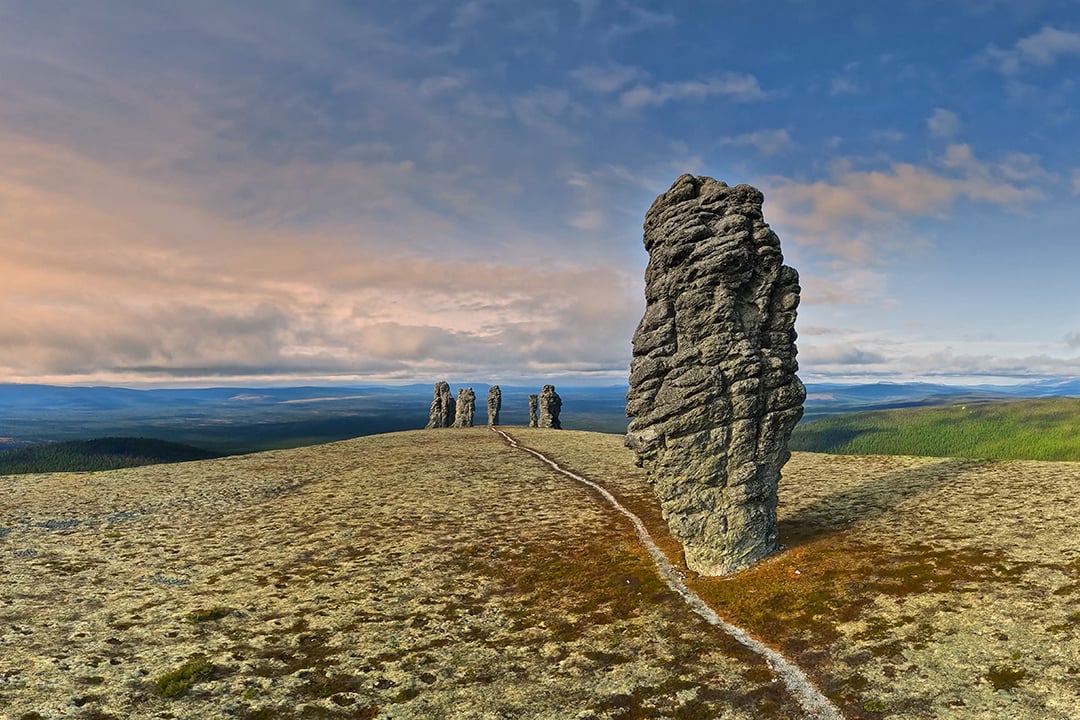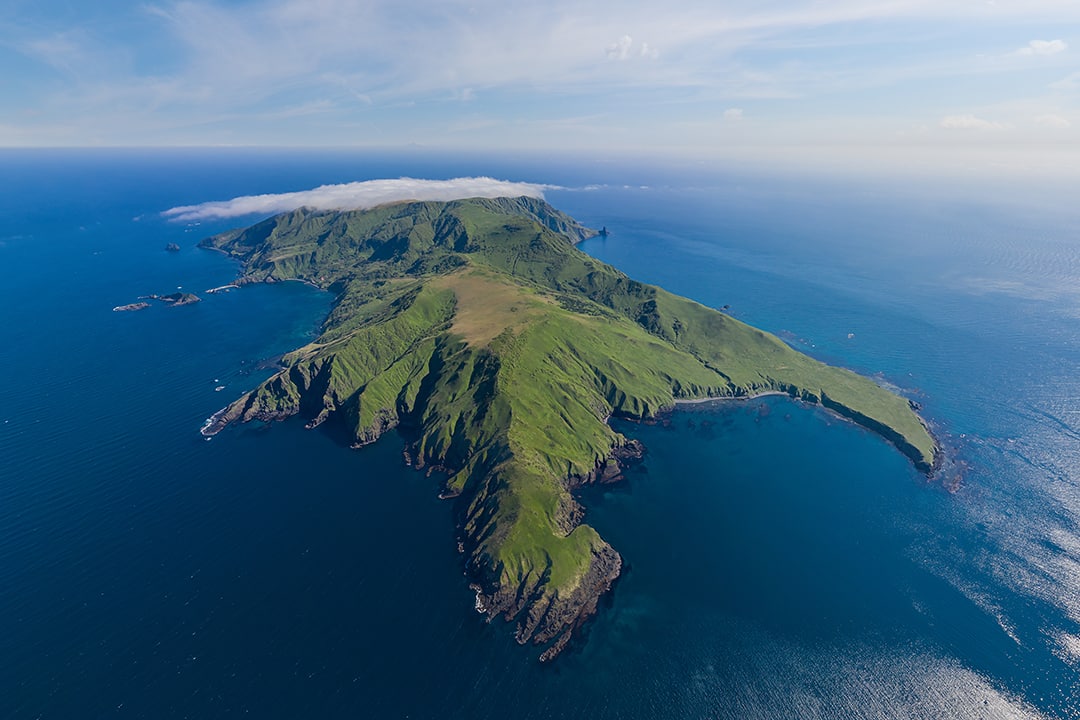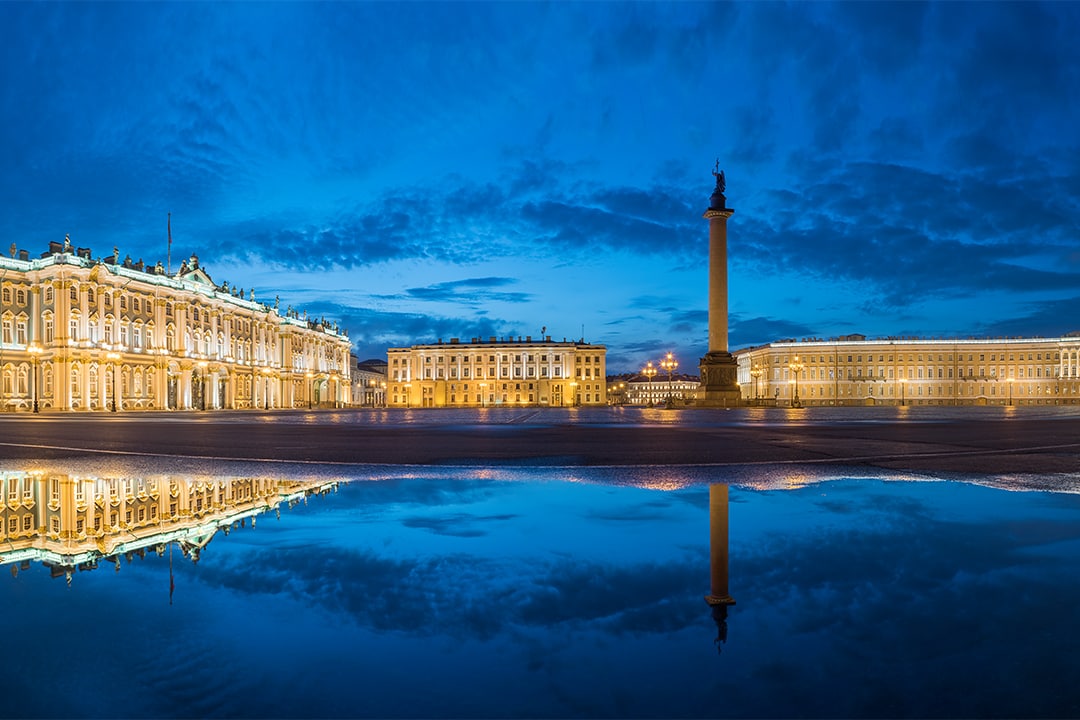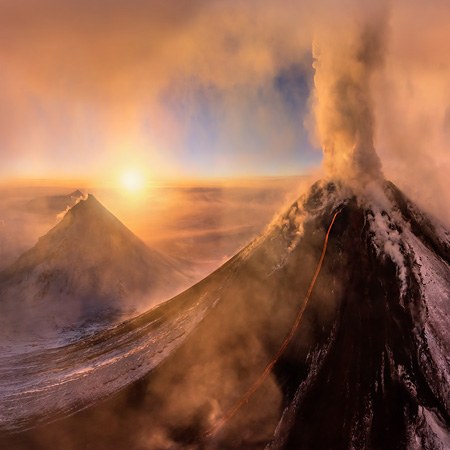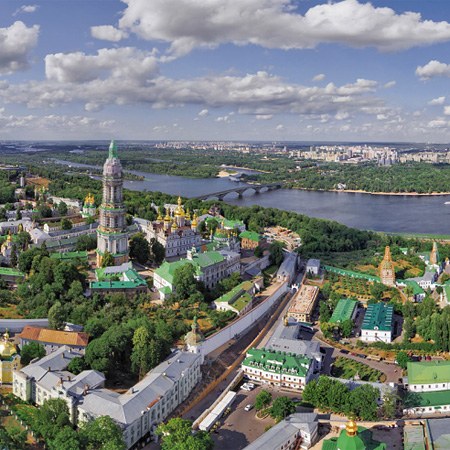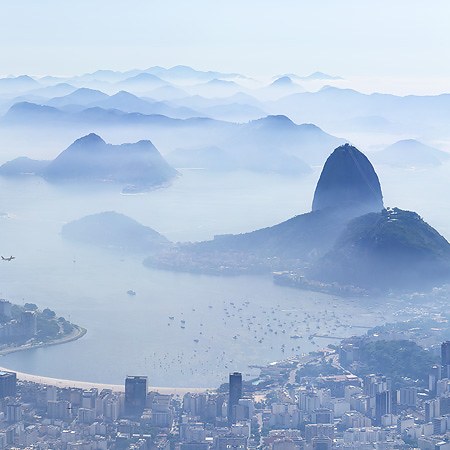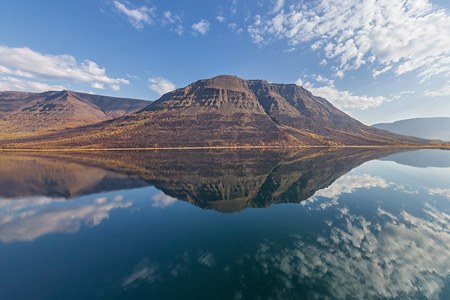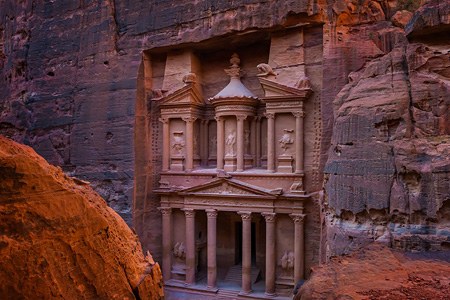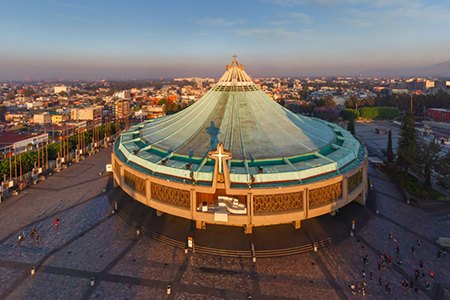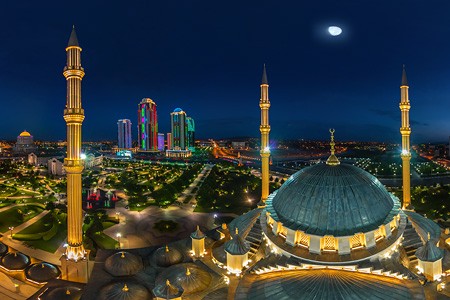Lisbon, Portugal
The capital of Portugal has a rich history spanning more than twenty centuries; it is something a rare city can boast of. Lisbon lies on the western bank of the Tagus River, just near the place where the river flows into the Atlantic Ocean creating a deep natural harbour. It is an attractive lot that Romans, Visigoths, warriors of Arab caliphate, French soldiers led by Napoleon Bonaparte and other great armies were fighting for. The period of peacetime began only after the Second World War.

One more important fact about the location of the city is its position regarding the areas of seismic activity. It is the place where the Eurasian and African tectonic plates approach to each other, consequently resulting in earthquakes. And that was in Lisbon, where one of the most destructive natural disasters in the history of mankind occurred. The earthquake with a magnitude 9 occurred on 1 November 1755 killing about one quarter of the Lisbon's population (100 000 people in 6 minutes). Subsequent fires and tsunami almost completely destroyed the city. Anyway, the fact that this earthquake caused the birth of modern seismology can be a poor consolation.

At that time Portugal was a rather wealthy colonial state, so the major part of the capital was rebuilt in a very short period of time — several months. As a result Lisbon became a unique European capital having no random town planning: the whole historical center of the city was built according to a common plan.

New quarters of the city, having begun their life from scratch, were the first ones to be seismically tested. According to the evidence of that time, a great number of soldiers were attracted to take part in these tests: they were to march in unison around the model of a building creating a sort of seismic activity.
However, the influence and economy of Portugal quickly fell into decay and the reconstruction of the city ceased. The witnesses of the beginning of the 19th century could describe dilapidated buildings all around the city.
One can wonder that several monuments of the past built in the Manueline style (Portuguese Renaissance) had survived the earthquake. One of them is Belém Tower built in 1515-1521 to celebrate the Portuguese discovering of the sea route to India. The other one is the Jerónimos Monastery where the tombs of the famous Portuguese explorer Vasco da Gama and other important historians are situated. Both of the monuments are classified UNESCO World Heritage Sites.
The most ancient building of Lisbon is the Castle of São Jorge (Castelo de São Jorge), but nevertheless, one can behold it in its restored form. The first fortified construction was built on a hill in around 48 BC, and then it was repeatedly enlarged and strengthened. But the 1755 earthquake had ruined a great part of the building. During the subsequent centuries the castle had been significantly reconstructed and in 1910 it was declared the monument of national importance.

The Águas Livres Aqueduct is the most famous technical construction of Lisbon and the architectural landmark of the city. The chain of stone arches built in the beginning of the 18th century was a solution to the problem of pure water supply; and it works for the same purpose even nowadays. And it is one more construction which has survived the natural disaster of the year 1755.
Majestic castles and cathedrals which appeared after the earthquake (the Estrela Basilica that can be noticed almost from any point in the city, the Mafra National Palace which is the biggest palace in Portugal and other monuments) make Lisbon one of the most picturesque cities of Europe. You will have no doubt as soon as you take a virtual walk round there with the help of our panoramas.
And now Stanislav Sedov will share his own impressions about his trip to Portugal.
Taking a sip of hot chocolate in a cafe situated on the roof of the Pena Palace and enjoying the sight of the clouds flying by, I sank into the memories of the events taken place during my trip to Portugal. Some of them were advantageous, some not that lucky. The Pena Palace was the place where we started taking photos for our panoramas. And it was the place I always wanted to go back to at times when a strong Atlantic wind prevented our drone from flying.

It is an absolutely magical and beautiful place situated at the distance of just a half-an-hour's ride from Lisbon. I remember how bewildered I was by a serpentine path twisting around the hill where the Pena Palace is situated. Great number of turns and huge trees hanging over the road, the lack of place where we could leave our car - all these seemed to prevent us from making panoramas of this beautiful Palace. The administration took no notice of our request, so we were not given the permission to fly over the territories of the park.
Having spent several hours wandering around the park, we finally found several places where we could launch our drone and it could reach the walls of the Palace; so we began to work. But the next day, as soon as we launched our drone, I had a conversation with a security guard who kindly requested not to fly over the territory of the park anymore. Fortunately, we had already finished with the main views of the Pena Palace, so we felt free to leave for Porto. But our adventures in Porto were a different story, which we will share in a special tour.

As soon as we were back to Lisbon, we visited the statue of Christ the King erected on a high bank of the Tagus River. Although the statue belongs to the municipality of Almada, we decided that the Lisbon tour would be incomplete without this monument.
Lisbon turned out to be a rather tricky city. Narrow streets with tight web of tram-lines and, as a result, of cables above our heads, limited our choice of places where we could launch our drone. Generally, it becomes more and more complicated to fly over the European capitals due to the ambiguous attitude of the local authorities. For example, drone-flights have been recently prohibited in France. With this in mind, we tried not to be noticed by the local authorities.
But here, in Portugal, we were much luckier! The Lisbon inhabitants were quite positive towards us and what we did. Only once, while we were flying over one of the central squares, police patrol came up and wondered what we were taking photos of and why. But the warmest welcome we received near Belém where one can find a plenty of summer cafes crowded by tourists and locals as well.

The only place that we did not manage to shoot at our first time was the 25th of April Bridge (25 de Abril Bridge). Having arrived at sunrise, I found out that a US warship was moored near the bridge. I thought I would not be that lucky to fly unnoticed near such a threatening neighbour. I was not ready to cause an international row, so I postponed the shooting. What was my disappointment when, having returned to the bridge in couple of days, I found the ship at the same place! But this time we had a stroke of luck: at the first light of dawn, the ship hoisted the flag and moved towards the Atlantic Ocean. Without delay, I lifted the drone to the middle of the river, which width is more than 2 kilometers in this place. A huge cruise liner, sailing under the bridge at that moment, was a kind of compensation to the US warship that had left the frame of the shot...

Time flew with a speed of the clouds floating by as I was sitting on a terrace in a cafe. It was time to pack and go to the airport. Before I left the park I stopped to look back at the Pena Palace - one day I will be back here, I promise!
Photos by Sergey Shandin and Stas Sedov
22 May 2015
Read more
Photogallery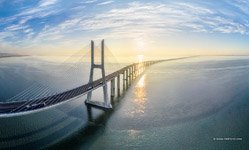 Vasco da Gama Bridge, the longest in Europe
Vasco da Gama Bridge, the longest in Europe
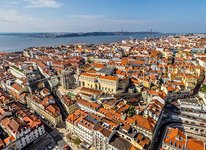 City view
City view
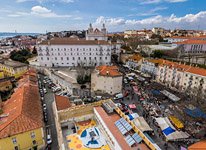 City view. Monastery of São Vicente de Fora
City view. Monastery of São Vicente de Fora
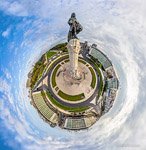 Marquis of Pombal monument. Planet
Marquis of Pombal monument. Planet
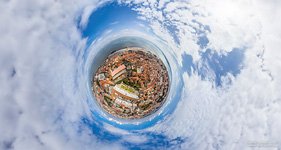 Above the monastery of São Vicente de Fora
Above the monastery of São Vicente de Fora
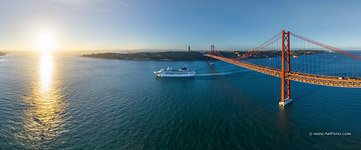 Tagus River, 25 de Abril Bridge
Tagus River, 25 de Abril Bridge
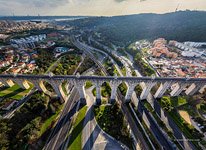 Águas Livres Aqueduct #2
Águas Livres Aqueduct #2
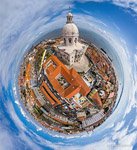 National Pantheon. Planet
National Pantheon. Planet
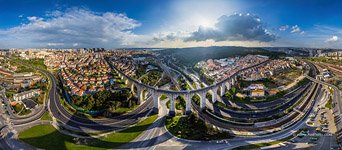 Águas Livres Aqueduct #3
Águas Livres Aqueduct #3
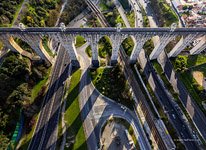 Above the Águas Livres Aqueduct
Above the Águas Livres Aqueduct
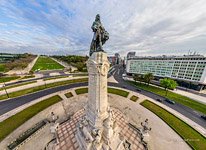 Marquis of Pombal monument
Marquis of Pombal monument
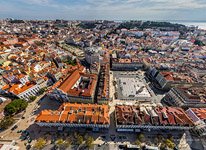 City view. Praça da Figueira
City view. Praça da Figueira

